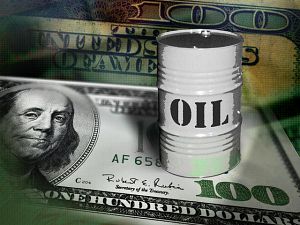As Democrats crawl out from their election night hangovers, still riding the high of President Barack Obama’s re-election victory, it appears that a reality check is due. Obama might have won the election, but the battle was won by the dirty energy industry.
Sure, the industry went all-in on Republican nominee Mitt Romney, showering him with almost $5 million, compared to a paltry $705,000 to Obama in 2012. But the industry knew better than to put all of their eggs in one basket, and they received a massive return on their investment in the down ballot races, particularly those for the U.S. House of Representatives.
According to OpenSecrets.org, the top 20 House candidates who received money from the dirty energy industry were all members of the Republican Party. Together, these 20 Republican candidates received more than $3.6 million from the industry.
Here are the top recipients of dirty energy largesse (all money sources via OpenSecrets, election results via Huffington Post), along with the results of their respective elections:
John Boehner, Republican Speaker of the House: Top recipient among Congressional candidates of dirty energy money, with $361,299. Won his re-election bid by running un-opposed.
Roger Williams, Republican from Texas: $282,408 from industry, won election with 58% of the votes.
Mike Pompeo, Republican from Kansas: $237,750 from industry, won re-election with 62.5% of the votes.
Kevin McCarthy, Republican from California. $224,200 from industry, won re-election with 73.8% of the votes.
Eric Cantor, Republican from Virginia: $218,250 from industry, won with 58.6% of the vote.
Dave Camp, Republican from Michigan: $207,000 from industry, won with 63% of the votes.
Bill Flores, Republican from Texas: $183,256 from industry, won with 79.9% of the votes.
John Fleming, Republican from Louisiana: $177,900 from industry, won with 75.3% of the votes.
Steve Pearce, Republican from New Mexico: $171,350 from industry, won with 59.1% of the votes.
John Sullivan, Republican from Oklahoma: $167,050 from industry, defeated by Republican Jim Bridenstine in the primaries. (Bridenstine won election with 63.5% of the votes.)
Cory Gardener, Republican from Colorado: $162,300 from industry, won with 58.6% of the vote, with 87% of precincts reporting.
Michael Williams, Republican from Texas: $149,100 from industry, lost in the primaries for a seat that still went Republican in the general election.
Fred Upton, Republican from Michigan: $144,300 from industry, won with 55% of the votes.
Francisco Canseco, Republican from Texas: $142,701 from industry, lost to Democrat Pete Gallego with only 45% of the vote.
Mike Coffman, Republican from Colorado: $132,250 from industry, narrowly won his election with under 50% of the vote.
Mike Conaway, Republican from Texas: $131,050 from industry, won with more than 78% of the votes.
Jeb Hensarling, Republican from Texas: $131,050 from industry, won with 64.4% of the votes.
Joe Barton, Republican from Texas: $130,650 from industry, won with 58% of the votes.
Charles Boustany, Republican from Louisiana: $129,550 from industry, won with 44.7% of the votes.
Pete Olson, Republican from Texas: $129,400 from industry, won with 64.1% of the votes.
Out of these twenty investments, there was only one real loss to speak of, and that was Francisco Canseco in Texas, where the seat switched parties. But 19 out of 20 is still a major win for the dirty energy industry.
What’s interesting to note here is that the top recipient of dirty energy money, John Boehner, was running unopposed, so he didn’t necessarily need the money to fight an electoral battle. Instead, that money buys his loyalty, and that is exactly what the industry is counting on in the next Congressional cycle.
Big money, especially from the dirty energy industry, was defeated (for the most part) in the presidential election, but they scored enormous wins in other races. As a result of their Congressional victories, and even the money they threw to President Obama, it is likely that we’ll witness another four years of either inaction on climate change and environmental issues, or a backslide.
The dirty energy industry won, and Americans lost. Sadly, that scenario hasn’t changed in more than a decade.
Subscribe to our newsletter
Stay up to date with DeSmog news and alerts






